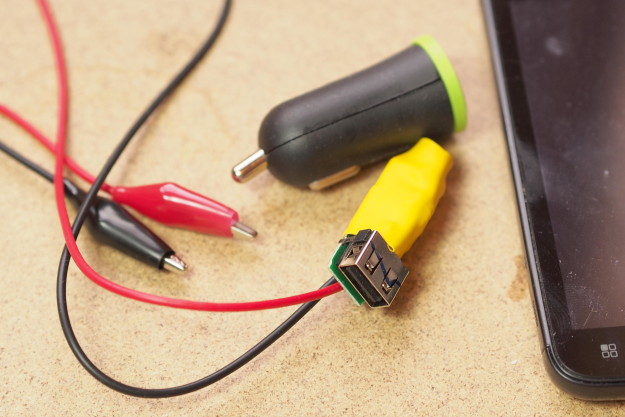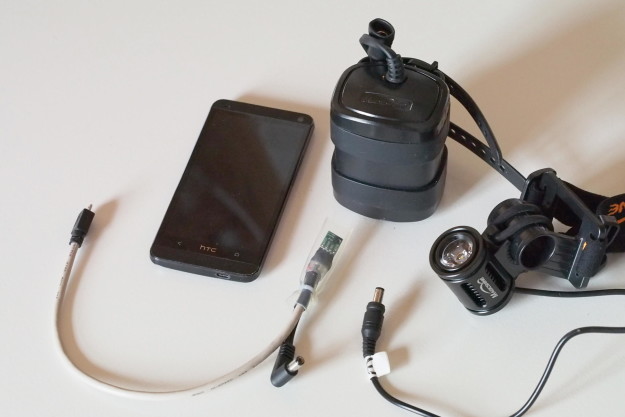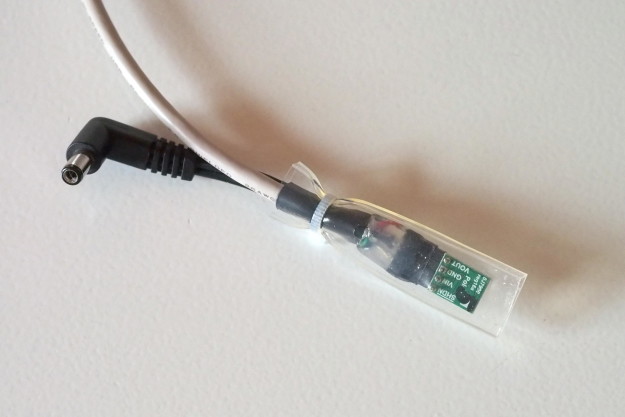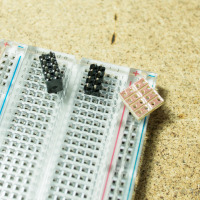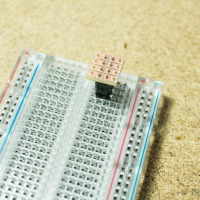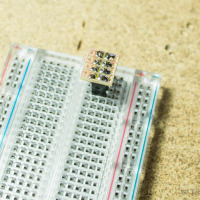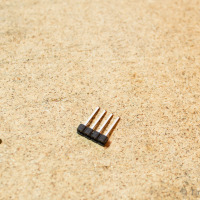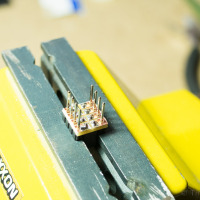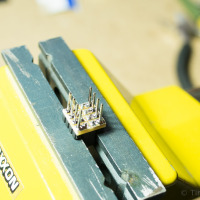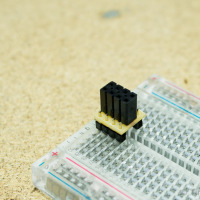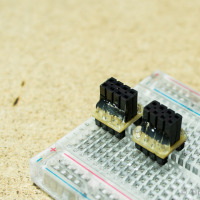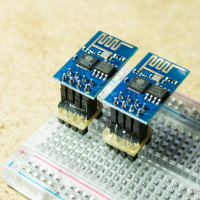After the USB charging converter for my headlight battery packs worked really well last weekend (I got two full charges from one battery pack), I decided to quickly implement a simple 12V to USB charging hack I had in mind for quite some time.
On one of the recent hikes between huts I realised that some of the huts in Norway have solar panel powered 12V power supply. I’ve had a spare car-cigarette-lighter to USB adapter for quite some time and decided to replace the plug with generic crocodile clamps which are more versatile. With these new contacts, I can now attach to any 12V source to recharge USB appliances. For a little protection, I secured the leads with hot glue and covered the circuit board with a bit of yellow shrink tube.

